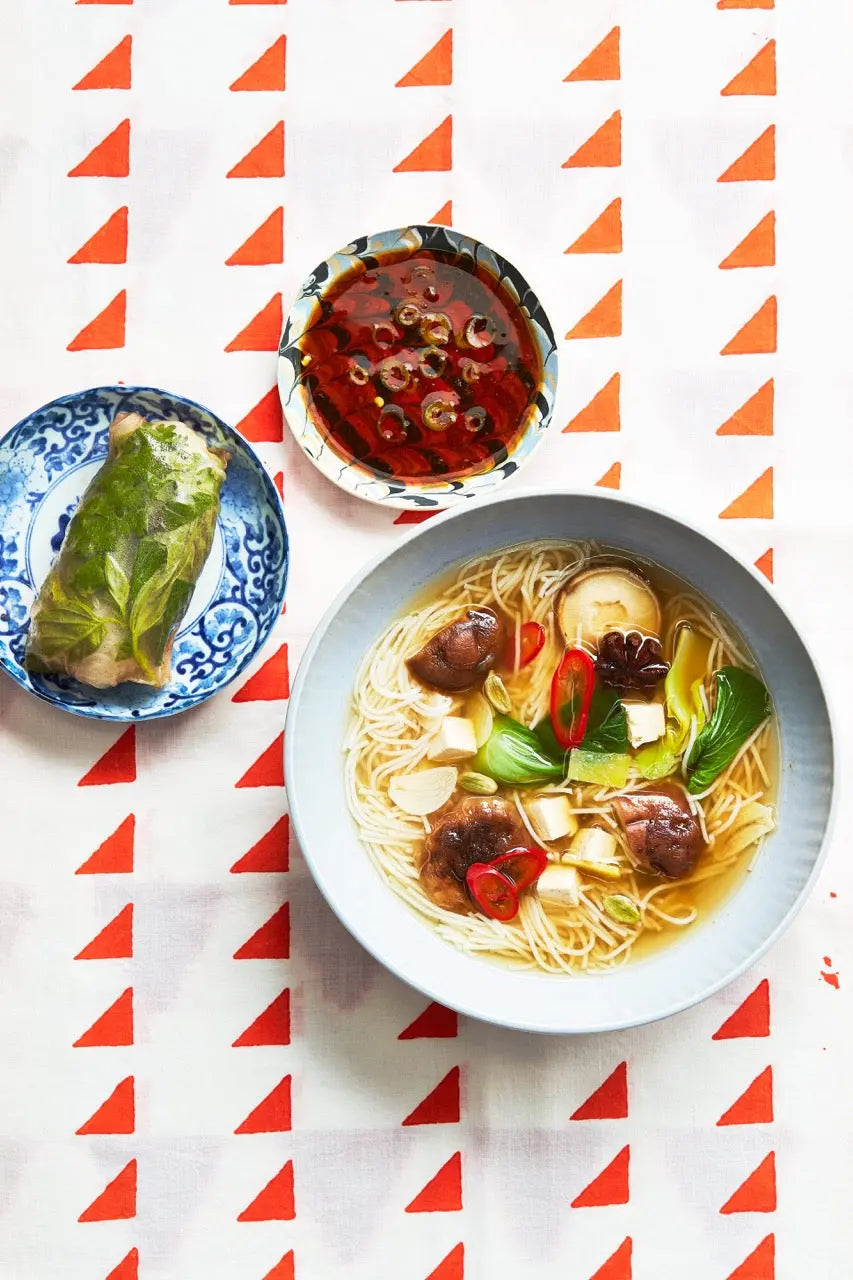Bowl Of Resistance: The Complex Origins of Pho, Vietnam’s National Dish

While most of the dishes that have inspired Laroot meals possess a history dating back hundreds of years, some of them, even if they do have centuries-old predecessors, came into popular existence in modern times. One of them is pho, a rustic Vietnamese soup traditionally composed of perfumed bone broth, herbs, rice noodles, and sliced beef or chicken. (Our vegan interpretation, titled the Resistance Pho, is made with a vegetable stock and counts tofu as its protein source.)
Developed at the end of the 19th century as a result of converging cultural factors in Vietnam, pho is now considered the country’s national dish, emblematic of its people’s self-determination, self-reliance, ingenuity, and resistance to colonialism. Throughout the 20th century, the soup provided fodder for protest poems, informed Communist economic policies, and, during the Vietnam War, even played a role in an espionage plot. Today, the many regional varieties of pho speak to local resources, tastes, and traditions; the sweet pho that Americans are used to, for example, has roots in south Vietnam, where the broth is typically seasoned with hoisin and chili sauces.

The precise origins of pho are hotly debated, but food historians tend to agree that the first versions appeared in the Nam Dinh Province, of northern Vietnam, in the 1880s, not long after the entire country came under French colonial rule. The soup is likely a composite of three dishes: ngau yuk phan, beef and noodles prepared by Cantonese immigrants living in the province; xáo trâu, a Vietnamese buffalo-meat soup with rice vermicelli; and the French pot-au-feu (“pot on fire”), a humble stew of beef chuck roast, vegetables, and herbs enjoyed by French textile workers living in Nam Dinh. (The word “pho” derives from either phan or feu.)
French colonialists’ demand for beef, which hadn’t traditionally been consumed as a protein source in Vietnam, led to a surplus of bones from the animal. These were then collected by pho originators as a source for broth, which they aromatized with ginger, star anise, cardamom, and onion. With time, sliced buffalo was replaced with beef, while vermicelli was swapped for thicker, round rice noodles, similar to those used for ngau yuk phan. In a few short years, pho’s popularity spread north, via the Red River, to Hanoi, which, according to pho purists, is the sociocultural capital of the dish. There, recipes were significantly pared back, with only bones and meat used to season the broth; herbs and spices were sometimes omitted outright.

Laroot’s Resistance Pho takes several cues from early Nam Dinh versions. Its stock, though vegetable-based, is seasoned with cinnamon, clove, coriander, and star anise, all known for their anti-inflammatory properties. Traditional, gluten-free rice noodles add a slightly chewy bite. And leafy greens such as bok choy provide vitamin C, fiber, and folate, a B vitamin that’s crucial for red-blood-cell formation and brain health. Brimming with complex flavors and preventive nutritional value, the Resistance Pho is Laroot’s ode to the transformative culinary output of Vietnamese pride, resolve, and resourcefulness in the face of the hardest of circumstances.
